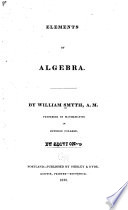 | William Smyth - Algebra - 1830 - 278 pages
...power or square of the sum of two quantities contains the square of the first quantity, plus double the product of the first by the second, plus the square of the second. Thus, (7 + 3) (7 + 3) or, (7 + 3)' = 49 + 42 + 9 = 100 So also (5 a2 + 8 a2 6)2 = 25 a6 + 80 <tb +... | |
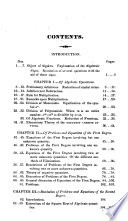 | Bourdon (M., Louis Pierre Marie) - Algebra - 1831 - 446 pages
...enunciated in another manner : viz. The square of any polynomial contains the square of the first term, plus twice the product of the first by the second, plus the square of the second; plus twice the product of each of the two first terms by the third, plus the square of the third; plus... | |
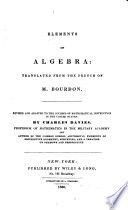 | Charles Davies - Algebra - 1835 - 378 pages
...(a-by=(ab) (ab)=a1-2ab+V That is, the square of the difference between two quantities is composed of the square of the first, minus twice the product of...first by the second, plus the square of the second. Thus, (7a3i3-12ai3)3=49aW-168a''is+144a3ii1. 3d. Let it be required to multiply a+b by a— b. We have... | |
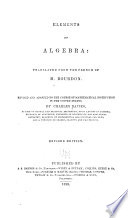 | Algebra - 1838 - 372 pages
...difference, a — b, we have (a-by=(ab) (ab)=a?-2ab+t2 : That is, the square of the difference between two quantities is equal to the square of the first, minus twice the product of the frst by the second, plus the square of the second. Thus, fTVi2— 12ai3)2=49a4i4— 168a3i5+144a2i6.... | |
 | Charles Frederick Partington - Encyclopedias and dictionaries - 1838 - 1116 pages
...the product of the first and second. 2°. That (o — b) (a — i) = a* — 2o6 + V ; or, that the square of the difference of two quantities is equal to the square of the first, plug the square of the second, minus twice the product of the first and second. 3°. That (a + i) (a... | |
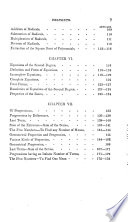 | Charles Davies - Algebra - 1839 - 272 pages
...39. To form the square of a difference a— b, we have That is, the square of the difference between two quantities is equal to the square of the first,...first by the second, plus the square of the second. 1 Form the square of 2a — b. We have 2. Form the square of 4ac — be. We have (4 ac — be)2 —... | |
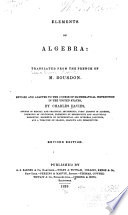 | Bourdon (M., Louis Pierre Marie) - Algebra - 1839 - 368 pages
...difference, a — b, we have (a— 6)2=(a-6) (a-6)=a2-2a6 + 62: That is, the square of the difference between two quantities is equal to the square of the first,...first by the second, plus the square of the second. Thus, (7a262— 12a63)2=49a4M— 168a365+144a266. 3d. Let it be required to multiply a+6 by a — b.... | |
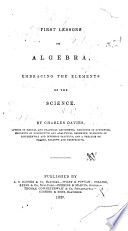 | Charles Davies - Algebra - 1839 - 264 pages
...principles, That is, the square of the sum of two quantities is equal to the square of the first, plus twice the product of the first by the second, plus the square of the second. 1. Form the square of 2a+36. We have from the rule (2a + 36)2 = 4<z3 + 12ab + 962. 2. (5a6 + 3<zc)2... | |
 | Charles Davies - Algebra - 1840 - 264 pages
...39. To form the square of a difference a— b, we have That is, the square of the difference between two quantities is equal to the square of the first, minus twice the product of tht frst by the second, plus the square of the second. 1 Form the square of 2<z— b. We have (2a —... | |
 | Charles Davies - Algebra - 1841 - 264 pages
...J)=a2— 2aJ+J2. That is, the square of the difference between two quantities is equal to the squajre of the first, minus twice the product of the first by the second, plus the square of the second. 1 Form the square of 2a— b. We have (2a — J)2=4a2 — 4aJ+J2. 2. Form the square of 4ae — be.... | |
| |